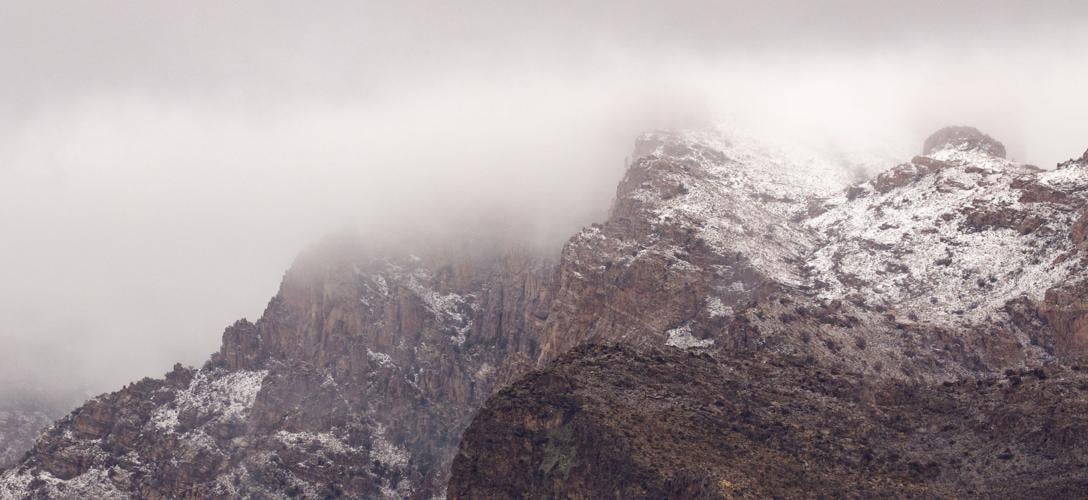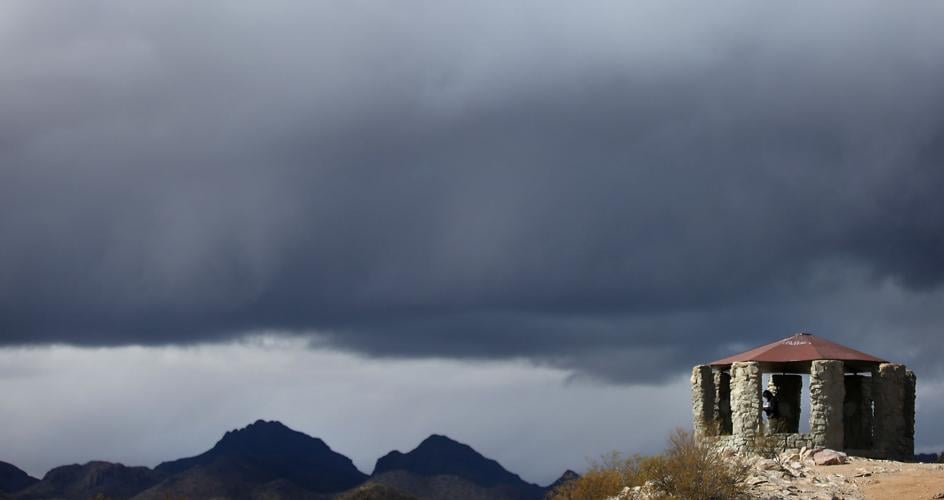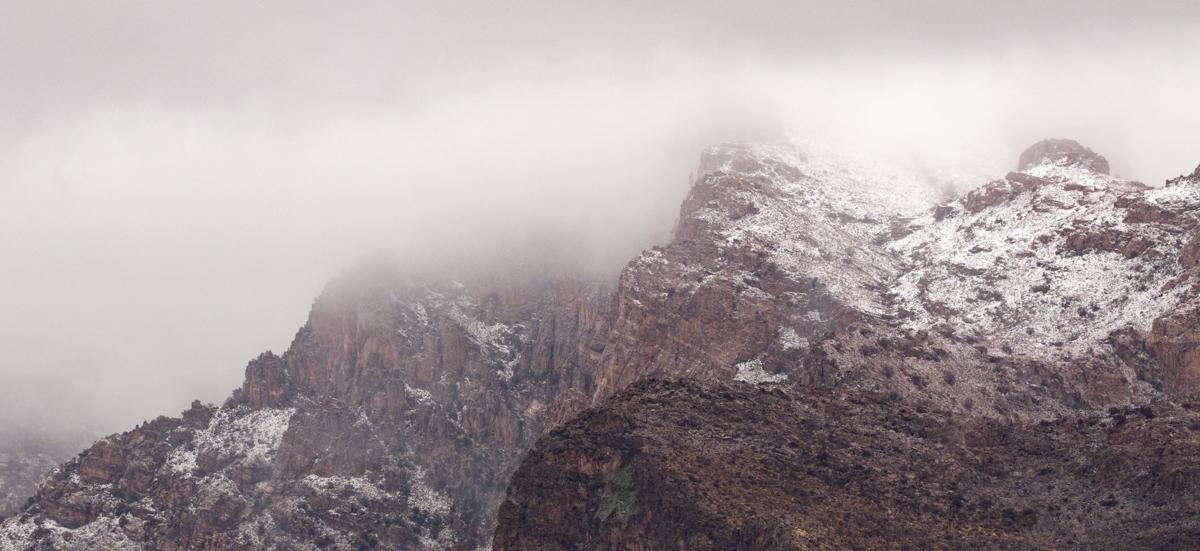Tucsonans may be able to break out their corncob pipes and button noses this week — an approaching storm promises enough flurries in some parts of town to build a snowman.

Manuel Lucero reads the Book of Daniel in a ramada on Sentinel Peak as clouds move over the Tucson Mountains. Rain, snow and cooler temperatures are expected this week.
A storm moving through Southern Arizona on Monday and Tuesday will likely bring a dusting of snow to parts of Tucson, with about an inch in the foothills and up to 3 inches further east and south of Tucson in Benson, Green Valley and Sahuarita, said Carl Cerniglia, a meteorologist with the National Weather Service in Tucson.
The storm that brought rain to Tucson over the weekend also brought about four inches of snow to the Summerhaven area as of Sunday around noon. The road up to Mt. Lemmon was closed to visitors Sunday due to the weather.
Cerniglia predicted another two to three inches of snow for Mt. Lemmon later Sunday. But the heaviest snowfall on the mountain will come Monday and Tuesday, with the new storm expected to dump up to a foot of fresh powder, Cerniglia said.
An early Winter storm brought snowfall to the higher elevations in the Santa Catalina Mountains north of Tucson and throughout Arizona early on Nov. 9, 2020. Video by Rebecca Sasnett / Arizona Daily Star
Wednesday morning is also expected to be the coldest it’s been all winter, he said, advising people to cover their plants and prepare for a hard freeze. Towns south and east of Tucson, such as Willcox, Benson and Sonoita, should see single-digit temperatures, Cerniglia said.
Meteorologists predict rainfall totals after Wednesday will be around one-half to three-quarters of an inch for the year. The rainfall total for the Tucson area is 8 inches below average for the past 12 months.
The current storm will not erase the current drought, but the rain will help our parched vegetation, Cerniglia said.
After these current systems pass through, expect more rain next weekend and possibly a fourth storm next week, Cerniglia said.
La Niña’s typical pattern in the Pacific tropical region causes a warmer, drier winter in the southwest region. Once La Niña moves out after March, meteorologists are hoping for a normal monsoon, Cerniglia said.
Photos: Snow in Tucson in the 1960s

Snowmen starting to thin out as the temperature warms up after a snowstorm in Tucson on Dec. 17, 1967.

Snow on the El Con Mall sign in Tucson on March 3, 1964, ironically welcoming the Cleveland Indians for Spring Training.

Snow on the playground at Reid Park Tucson on March 3, 1964.

Snow on the Pima County Courthouse in Tucson on March 3, 1964.

Snowfall at Hi Corbett Field, Tucson, on March 3, 1964.

Women throw snowballs in Reid Park, Tucson, on March 3, 1964.

Snowfall in Tucson on March 3, 1964.

Snow at Saguaro National Park East (then, Saguaro National Monument) on Dec. 23, 1965.

Snow and ice at Kitt Peak National Observatory on March 3, 1964.

Snow and ice clinging to the telescope structure at Kitt Peak National Observatory west of Tucson on March 3, 1964.

Snowfall in El Encanto Estates, Tucson, on Feb. 10, 1965.

Snow in El Encanto Estates, Tucson, on Feb. 10. 1965.

Mothballed planes covered with snow at Davis-Monthan AFB in Tucson on Feb. 10, 1965. The Rincon Mountains are in the background.

Those who needed a sign to tell them it was snowing were happily obliged by Tucson resident Ken Newman at Old Spanish Trail and Golf Links Road on Dec. 23, 1965. If the Tucson Citizen/Arizona Daily Star photo archives are any barometer, the Tucson area got good doses of snowfall in the 1960s. Go to tucson.com/retrotucson to check out the black-and-white scenes of a snowy Tucson.

Snow on the Santa Catalina Mountains north of Tucson as seen from downtown on Feb. 11, 1966.

A motorist awaits service from a tow truck driver during a snow storm on Dec. 17, 1967 at a Skaggs Drug Store on East Broadway in Tucson.

A chance encounter with Santa at Skagg's Drug Store on Broadway during a snow storm in Tucson on Feb. 17, 1967.

Snow clogs the Catalina Highway to Mt. Lemmon at 5,400 feet elevation on Feb. 18, 1967. Rock slides up ahead kept motorists from going further.

Snow in the Santa Catalina Mountains north of Tucson on Feb. 20, 1969.

Snow in the Santa Catalina Mountains north of Tucson on Feb. 20, 1969.

Snowfall drapes the trees along the Catalina Highway to Mt. Lemmon at about 7,500 feet on Dec. 6, 1969. Total snow accumulation was about nine inches.






